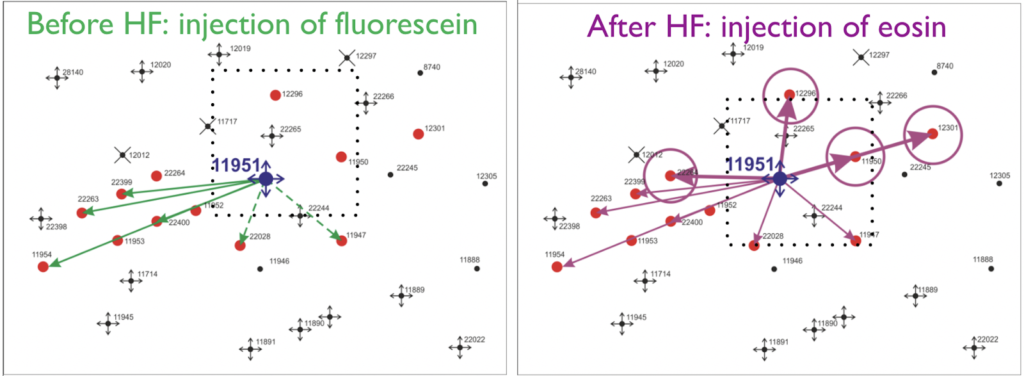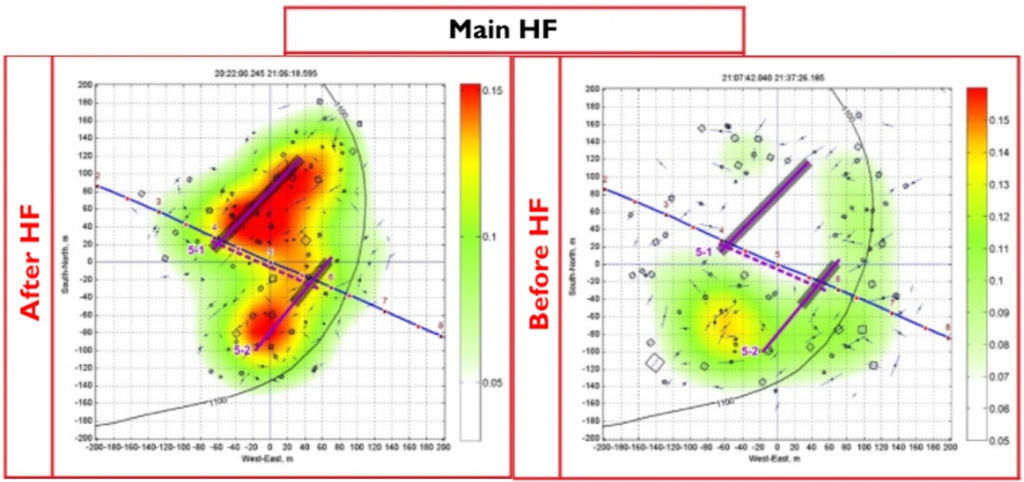Hydraulic fracturing is an effective method used to improve the rate of oil extraction from productive formations, or to increase the fluid injection rate to consequently generate a better hydrocarbons inflow to production wells. The lack of information on the azimuth of the fracture propagation whilst using hydrodynamic methods reduces the efficiency of field development optimisation. Collecting the data on the azimuth of hydraulic fracturing as it accumulates over the area allows for the subsequent fracturing campaigns at that field to be optimised, thereby increasing the production of deposits and reducing non-productive costs.
The process of microseismic monitoring of hydraulic fracturing comprises the tasks of determining the spatial position and the moment of microseismic events occurrence in the geological environment at the time of hydraulic fracturing and during subsequent fluid movement.
The are several methods of such microseismic monitoring adopted by the industry, with the most common being the method of monitoring from the nearby wells. Event registration is performed by downhole three-component sensors, similar to sensors used in vertical seismic profiling (VSP). Borehole observations are free of surface interference, which allows for satisfactory results to be achieved using relatively simple hardware and microseismic signal processing techniques. However, borehole monitoring has a number of disadvantages:
- it requires production or injection in the monitoring well to be stopped and equipment to be removed for the duration of the hydraulic fracturing campaign. For various financial or technological reasons, carrying out such works in the nearby wells can often be impossible
- the method cannot be used if there are no nearby wells or a trajectory of such wells is not suitable for monitoring of the planned hydraulic fracturing
TenzorGEO’s Full Waveform Location (FWL) technology uses an alternative observation method that does not require the use of wells and the sensors are positioned on the surface or seabed. This makes the method potentially more versatile than monitoring from nearby wells but requires the use of high-precision equipment and resource-intensive methods of filtering surface noise.
FWL technology we use for monitoring of hydraulic fracturing has a number of distinctive features in comparison to similar technologies on the market:
- hydraulic fracturing is monitored exclusively from the surface or seabed by broadband seismometers
- 3D full-wave numerical modeling is used to obtain 3-component responses of the model at the locations of the sensors to simulated events in the reservoir
- localisation of events is based on the method of maximum likelihood, which uses the full waveform and is the best event location method at a low signal-to-noise ratio
As part of a hydraulic fracture monitoring campaign using FWL technology, TenzorGEO is able to:
- assess the nature and dynamics of fractures development
- determine fracture parameters: azimuth, length and height, symmetry / asymmetry, proppant penetration zone
- determine the stimulated volume
For more specific details of the projects we completed, please see case studies below.



